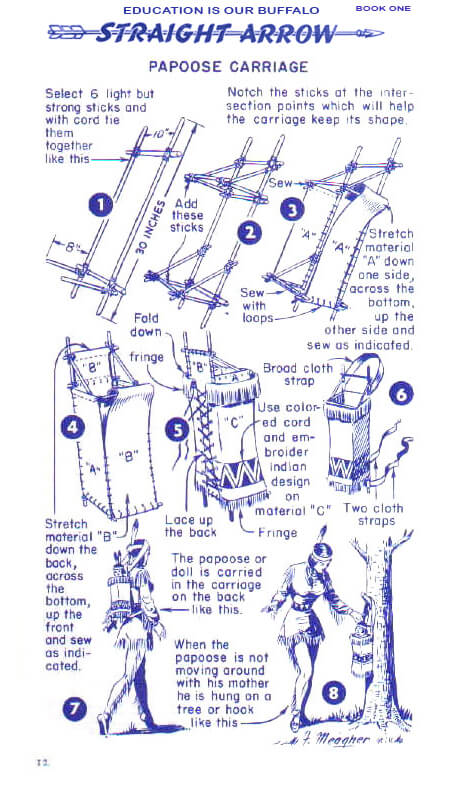
Papoose Carriage
In the Comanche tribe, the newborn was wrapped and spent a few days in the tipi with its mother. The mother returned to work after placing the baby in a cradleboard. She could easily hold the cradleboard on her back or prop it against a tree so the baby could keep an eye on her as she gathered seeds or roots. Cradleboards are made up of a flat board with a basket attached to it. Rawhide straps or a leather sheath laced up the front is used for the latter. The young one was securely tucked into the leather pocket using fluffy, dry moss as a diaper. The baby was bundled in blankets and put in the cradleboard during cold weather. The baby was held in the cradleboard for ten months before being able to crawl.
Both girls and boys were welcome to join the band, but the boys were given the upper hand. “It’s your close friend,” one of the midwives told the father or grandfather if the baby was a child. Families could paint a flap on the tipi to inform the rest of the tribe that they had added another warrior to their ranks. A man might name his child himself, but the father often asks a medicine man (or another notable man) to do so. He did so in the hopes that his child would live a long and fruitful life. Currently, in Africa, still, women carry their children on their backs while going out to work.

